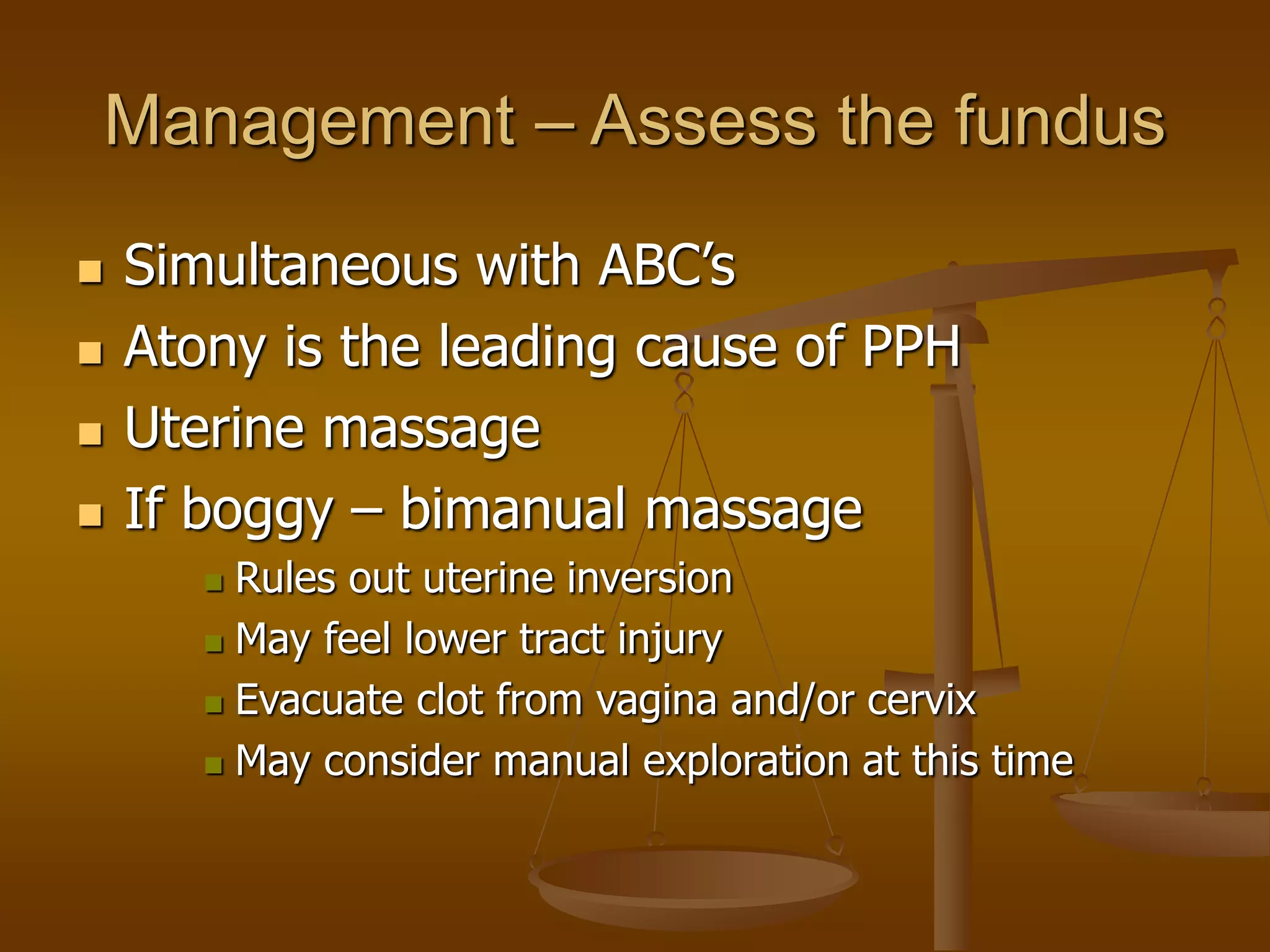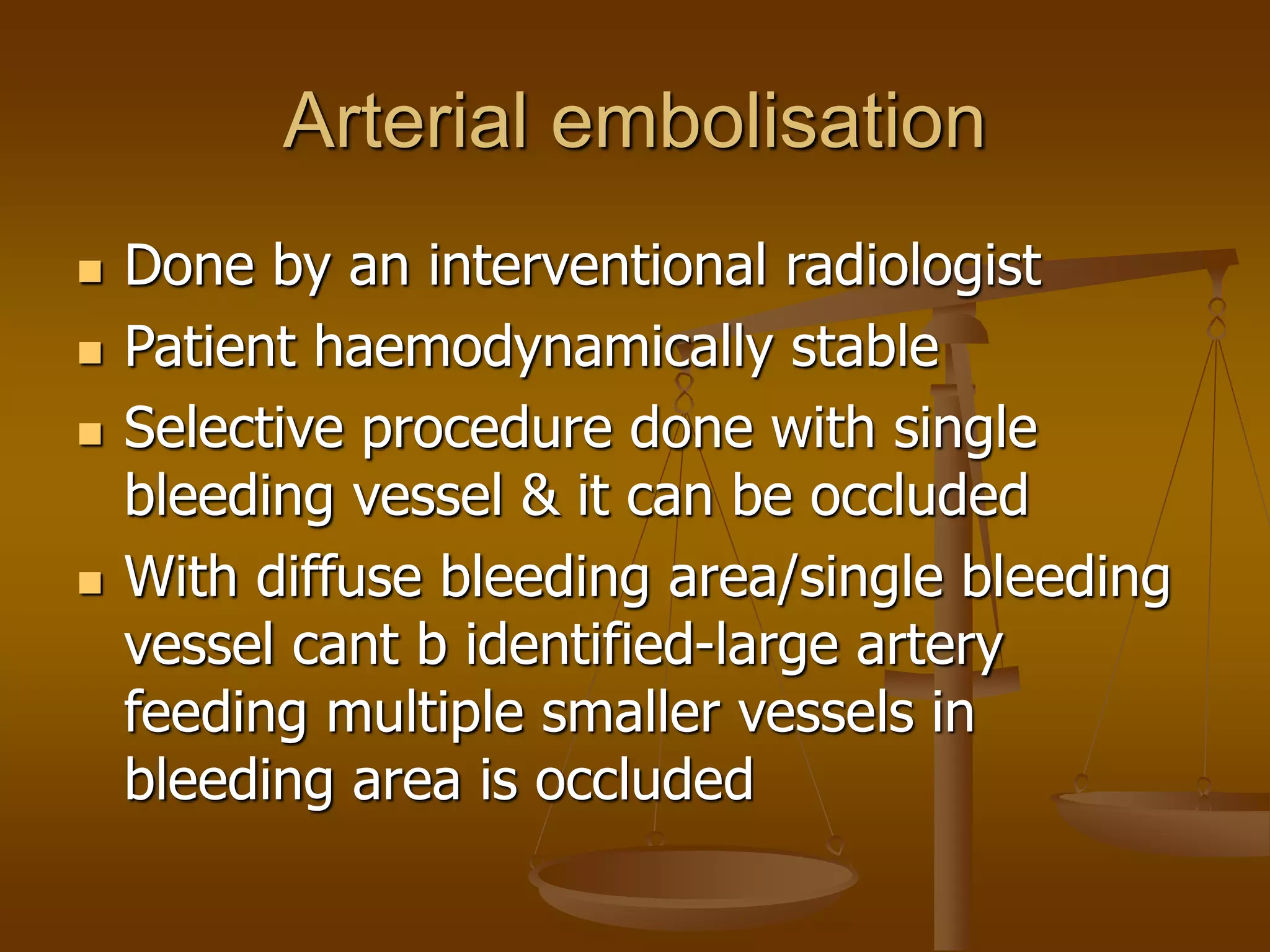Postpartum haemorrhage is defined as blood loss greater than 500ml following vaginal delivery or 1000ml following c-section. The leading cause is uterine atony which can be caused by factors like overdistension of the uterus or uterine fatigue. Prevention focuses on active management of the third stage of labor with uterotonics. Initial management of PPH involves ABCs, IV fluids, uterine massage, additional uterotonics like oxytocin, ergometrine, or misoprostol. If bleeding persists, further interventions may include bimanual compression, arterial embolization, compression sutures, or hysterectomy. Secondary PPH occurs after 24 hours and is usually due to retained placental




































